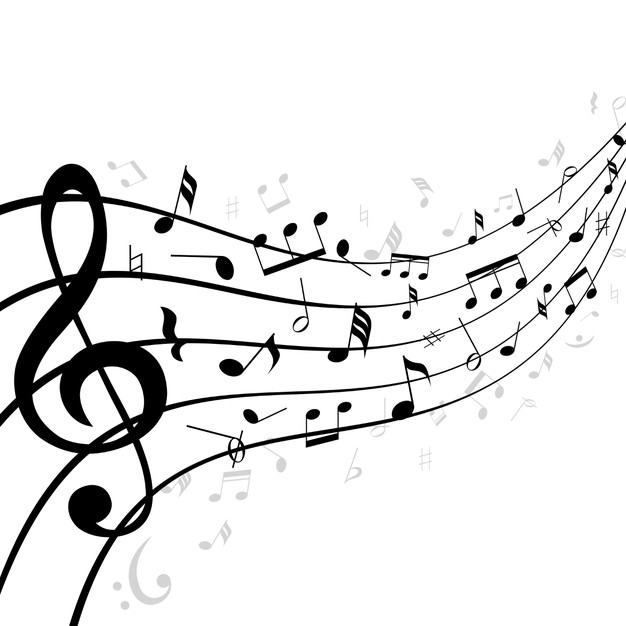Qual foi a última música que você ouviu? Pense nela e tente analisar cada aspecto dela: quantas pessoas cantam, quantos instrumentos são tocados, o tom, a repetição, a densidade da música, entre outros. Talvez você não saiba o que significam esses aspectos, e por isso hoje vamos falar sobre eles!
Ritmo: o ritmo está ligado ao tempo. O ritmo subdivide o tempo graduando os sons de acordo com a sua duração. Todos os sons e as pausas (silêncio) acontecem em um determinado período, e é a sequência dessas durações que gera o ritmo em alguma música. Faça agora a análise da música que você se lembrou: se os sons acontecem com o mesmo intervalo de tempo, repetindo as mesmas sequências de duração, o ritmo é REPETITIVO. Agora, se for mais rápida, ela terá, consequentemente, um ritmo mais agitado.
Compasso: o compasso divide a música em partes, nas quais se encaixam tempos de sons específicos. A palavra “compasso” define a acentuação regular da música. Exemplos:
– quando o ritmo é binário, cabem dois tempos no compasso;
– quando o ritmo é ternário, cabem três;
– quando o ritmo é quaternário, cabem quatro;
E assim por diante.
Pulsação: unidade rítmica básica, ou com outras palavras, é um padrão que fica repetindo durante algum tempo que deve ser regular. Exemplo: tique-taques de um relógio. É o tempo “forte” na música.
Andamento: velocidade com a qual a música é executada. Ele pode ser acelerado ou lento, por exemplo.
Antes de passar para o próximo aspecto, vamos relembrar a música que você ouviu. Ela é composta só por vozes? Ou só por instrumentos? Quando ela for composta só por vozes, podemos chamá-la de música vocal a capella; se instrumentos são as únicas coisas que compõem a música, chamaremos ela de instrumental. No caso da composição feita por instrumentos e vozes, chamaremos ela de mista. Com isso, vamos analisar outro aspecto:
Densidade: é a quantidade de sons acontecendo na música ao mesmo tempo e isso tem relação com a harmonia da música. Exemplo: quando uma só pessoa está cantando, a densidade é menor. Já quando dez pessoas e mais três violinos compõem a música, a densidade será maior.
Tom: faz referência à nota musical que se começa a cantar ou tocar. Exemplo: Quando uma pessoa começa a cantar com uma nota mais grave determinada música que na verdade é aguda. Quando isso acontece dizemos que houve uma mudança de tom no arranjo (adaptação de uma música para uma combinação sonora diferente da original)
Repetição: depois que você termina de ouvir determinada música, uma parte dela fica gravada em sua memória, e normalmente não sai da sua cabeça. Nós chamamos essas partes como refrãos, trechos da letra da música que ficam se repetindo.

Talking About Music
What was the last song you listened to?
Think about it and try to analyze each aspect of it: how mischief people sing, how many instruments are used, the tone, the repetition, the density of the music, and others. Maybe you don’t know the meaning of these aspects, and because of that we will talk about it!
Rhythm: the rhythm is connected with the time. The rhythm subdivides the time grading the sound according to its durations. All sounds and pauses (silence) happen in a certain time, and is a sequence of these durations that generates the rhythm in some music.
Now you can do the analysis of the song you remembered: if the sounds happen with the same time interval, repeating the same sequence of duration, the rhythm is repetitive.
Now, if it’s faster, it will be ,consequently, a more agitated rhythm.
Compass: the compass divides the music in parts, in which specific sound times fit. The word “compass” defines the music’s regular accentuation. Examples:
-when the rhythm is binary, it is two times in compass;
-when the rhythm is ternary, fit three;
-when the rhythm is quaternary, fit four.
And so on.
Pulse: basic rhythmic unit, or in other words, is a pattern that keeps repeating during a certinho period of time, which needs to be regular. Exemplos: ticking clock. It is the “strong” time in music.
Pace: speed with which the music is played. It can be fast or slow, for example.
inglês (americano)
Before moving on to the next aspect, let’s recall the music you heard. Is it composed only of voices? Or only instruments? When it is composed only of voices, we can call it vocal a capella music; if instruments are the only things that make up the music, we will call it instrumental. In the case of a composition made up of instruments and voices, we will call it mixed. With that, let’s look at another aspect:
Density: is the amount of sounds happening in the music at the same time and this is related to the harmony of the music. Example: when only one person is singing, the density is lower. When ten people and three violins compose the music, the density will be greater.
Tone: refers to the musical note that you start to sing or play. Example: When a person starts singing with a lower note, a certain song that is actually high. When this happens we say that there was a change of key in the arrangement (adaptation of a song to a different sound combination from the original)
Repetition: after you finish listening to a certain song, a part of it is engraved in your memory, and usually doesn’t get out of your head. We call these parts choruses, parts of the lyrics that keep repeating themselves.
Fonte das imagens: https://br.freepik.com/vetores-gratis/notas-musicais-em-uma-pauta-ou-pauta_10704780.htm#page=1&query=musica&position=0
Fonte do texto: Livro Sae
Autores: Manuella Schade, Luiza Wolanski, Lucas Moll, Maria Eduarda Travensoli, Luisa Wambier

